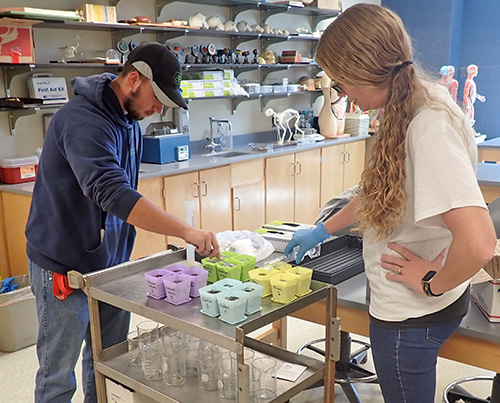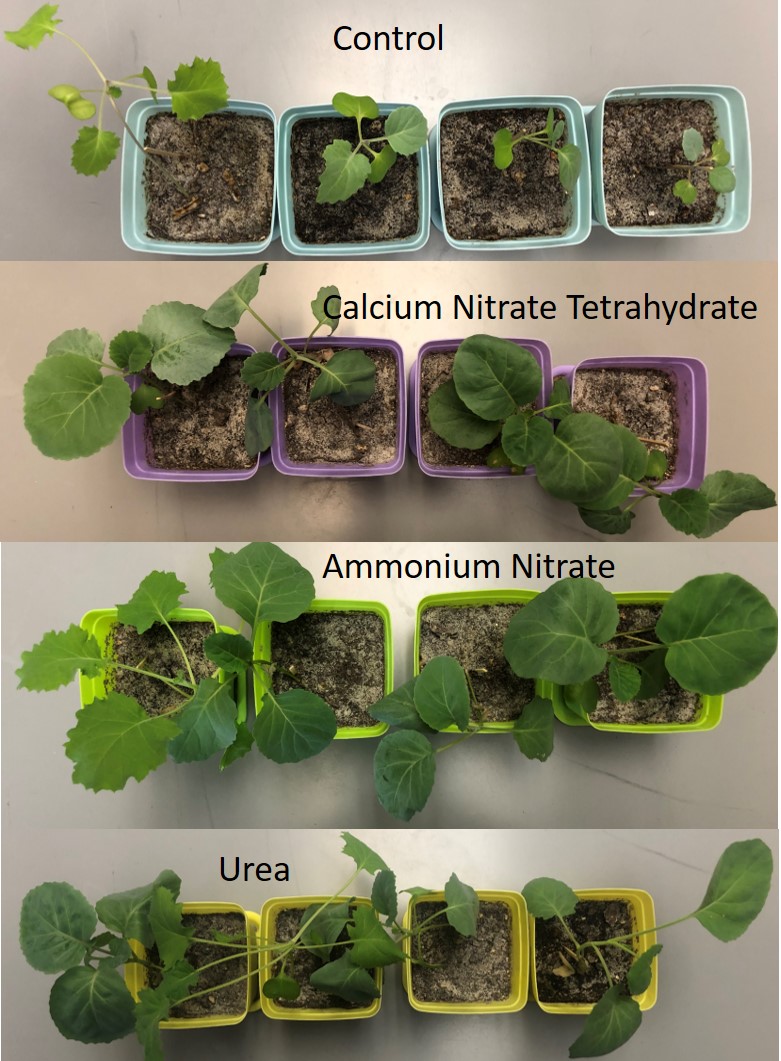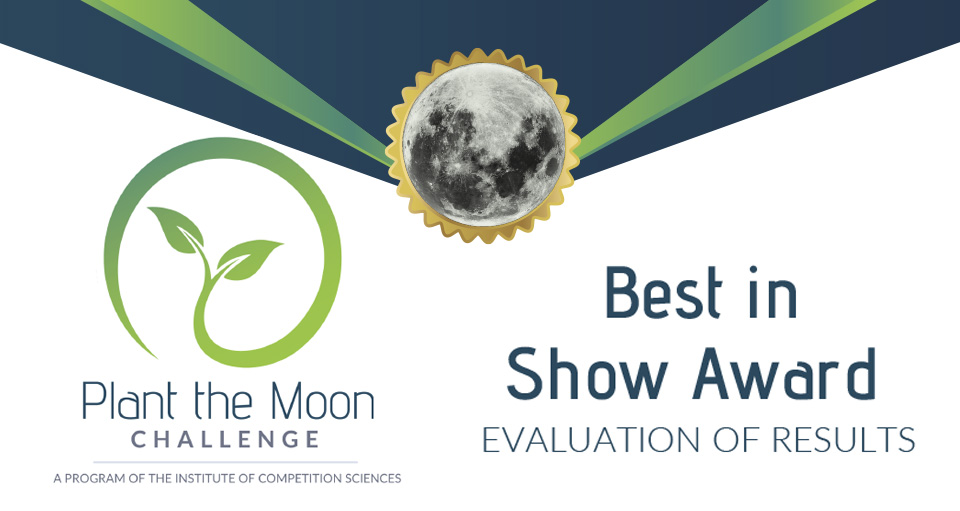Plant the Moon Challenge, a program of the Institute of Competition Sciences, is a global science experiment conducted to grow plants in conditions similar to what is on the moon. As NASA makes strides in sending astronauts to the moon, a large part is survival in space. This hands-on challenge allows participants to help astronauts learn to grow food on the moon. When we get to a new surface, can we use the resources that already exist there? Teams explored a real-world experience consisting of 4 parts: Research, Design, Plant & Monitor, and Analyze & Present. Each team purchased a Kit which included a 5kg bag of lunar simulant, enough to pot about 12 plants.
The Minnesota West Bluejay team received the Best in Show Award for "Evaluation of Results". The team, competing at the undergraduate/professional level, consisted of Minnesota West Student, Dalton Vorwald; and advised by Minnesota West faculty Biology Instructor, Heidi Tarus; Chemistry Instructor, Dr. Tyler Wadzinski; and Physics Instructor, Dr. Paul Seifert.
In August 2022, Tarus found out about the Plant the Moon Challenge, filled out NASA’s Minnesota Space Grant Consortium application and was granted the cost of a kit ($405). "The biggest challenge was getting students to participate and finding time where the team could meet to complete various parts of the project. After that, the hardest part was thinking of an experiment and planning out the design," said Tarus.
Tarus acknowledged as the team leader, she had many roles during the challenge including experimental design, set-up, collecting data, and writing up the final report. Dr. Seifert and Dr. Wadzinski played crucial roles in the process and editing the final report. Vorwald helped with the set-up, providing useful information about plants using his agriculture background and collected data during the grow period. As the weeks went on, the demands of fall harvest and teaching created some challenges, but they were able to keep the momentum going to finish out the project and get the final report submitted on time.
"The Worthington campus community helped to motivate us as we would regularly get asked questions about the “moon babies” and how the experiment was going," she said.
 |
Dalton Vorwald and Heidi Tarus began planting Collard Greens on September 30, 2022, to kick-off the Plant the Moon Challenge. The goal was to grow nutrient-rich plants for food in a lunar simulant, resembling the same sources found on the moon. According to the U.S. Department of Agriculture (2019), one cup of chopped raw collard greens (36g) contains 11 calories, 1g of protein, 1.44g of fiber, 2g of carbohydrate, and less than 1g of fat and sugar. |
In their lunar samples, the Bluejay team's study focuses on the best source of nitrogen that will allow plants to grow while reducing the amount of payload required on a spacecraft. Day 0 started on September 30, 2022, when the planting, watering, and organization began. By day 3, germination had begun and by day 10, true leaves were reported. The last day of the growing period was Day 49, on November 18. After a 10-week period, the team submitted their final project report.
The results supported their hypothesis. The Minnesota West Bluejay team found that Collard Greens (B. oleracea) grew significantly larger in the presence of a nitrogen-rich compound compared to when no nitrogen source was provided. They found no significant difference in plant growth between the three different nitrogen sources. Urea is the most weight-efficient nitrogen source tested; therefore, they recommend the use of urea as it would reduce the payload of the spacecraft traveling to the Moon.
The team was able to virtually showcase their report with NASA scientists and program executives. A Science Advisor Board member, Dr. Rafael Loureiro, provided feedback on the final report and suggests to run a duplicate experiment with a larger sample size or a different type of plant to see if the team would get similar results.
 |
The Minnesota West Bluejays team found that Collard Greens (B. oleracea) grew significantly bigger in the presence of a nitrogen-rich compound compared to when no nitrogen source was provided. The team found no significant difference in plant growth between the three different nitrogen sources. Urea is the most weight-efficient nitrogen source tested; therefore, the team recommends the use of urea as it would reduce the payload of the spacecraft traveling to the Moon. |
The Results and Analysis area of the report received an "EXCELLENT" status. Dr. Rafael Loureiro said, "Great use of ANOVA and the depiction of the results." ANOVA (Analysis of variance) is used to determine whether there are any statistically significant differences between the means of three or more independent (unrelated) groups.
"This challenge excited me to look for more research opportunities for Minnesota West’s students. Scientific research experiences can be rare at 2-year colleges but are important in shaping the academic and career paths of students. Team research experiences highlight the importance of collaboration in science while helping students gain useful research skills and scientific understanding. My hope is that these research projects will help my students identify as scientists and nudge my students into science-related career paths," Tarus said.
"I applied for a Spring 2023 PTMC grant from NASA’s Minnesota Space Grant Consortium and received notification that Minnesota West was approved again for a grant covering one kit. This time around I plan to integrate the challenge into my BIOL 1110 Principles of Biology I course to allow for more students to participate. This will remove the barriers experienced last semester related to students struggling to find time to participate."
The Plant the Moon Challenge and the Plant the Mars Challenge is open to all grade levels from elementary to high education and is an international event. This year the challenge had teams participate from 24 U.S. states, Canada, and India.
The instructors said they enjoyed offering the opportunity to Minnesota West students to participate in scientific research and discover what other teams around the world experimented on.






